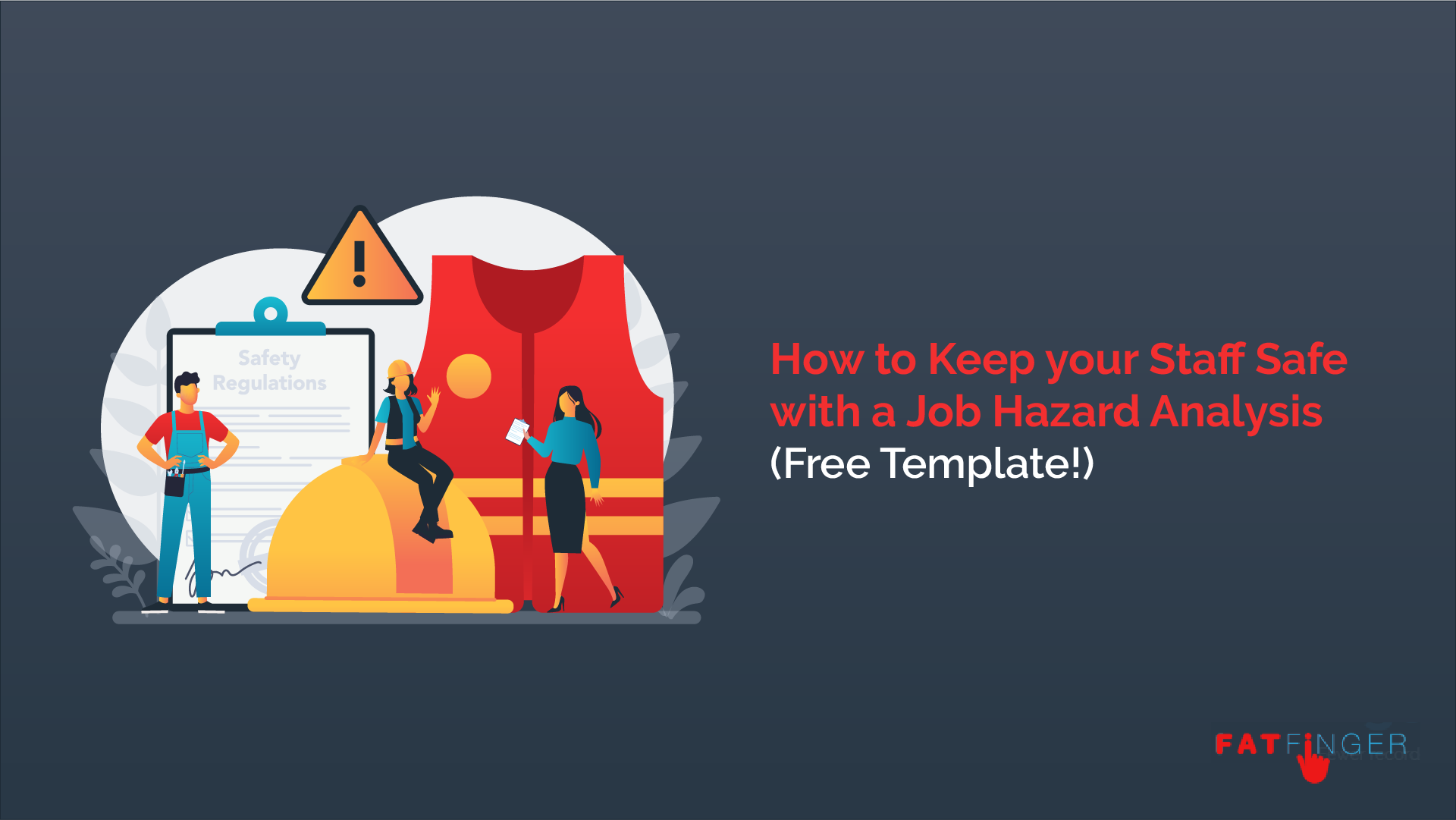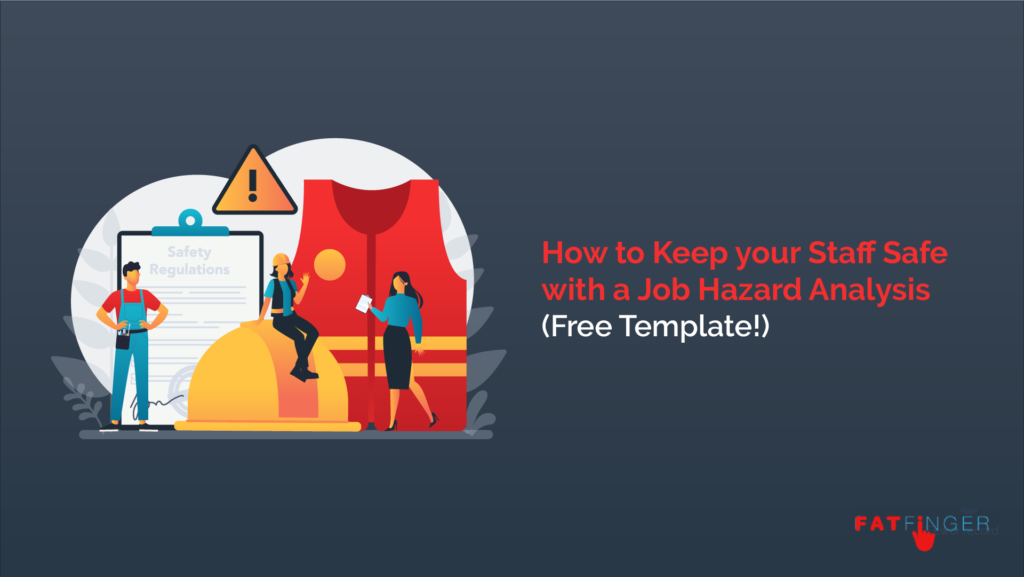
“No matter where you work or what you do for a living, there is a chance that you will get injured on the job.”
Work Injury Source, Workplace Injury Statistics
In 1894, a solicitor slipped on a turnip at work, fell, and sued his employers for the equivalent of $2,000.
A true story that’s still relevant today. Although, instead of slipping on a turnip in the office, it might be a spilled cup of coffee instead.
Workplace accidents, injuries, and illnesses are costing companies around $62 billion a year. From slicing a finger on a piece of paper to falling from 20ft high scaffolding, your employees are vulnerable to injury, accidents, and illness during any task, in any job, and in any company.
This means that you, as their employer, are liable to foot the bill for any time taken off work, compensation, and legal fees.
So how do you protect your employees and save on costs associated with workplace accidents, injuries, and illnesses?
With a job hazard analysis (JHA). Which, coincidentally, this FAT FINGER post is all about.
To keep you and your employees safe at work, we’ll cover the following:
- What a job hazard analysis is (and what it isn’t)
- Why you should complete a job hazard analysis
- The easiest way to complete a job hazard analysis
Ready to analyze some hazards?⚠️
What a job hazard analysis is (and what it isn’t)

A job hazard analysis (JHA), sometimes referred to as job safety analysis (JSA), is a process that organizations go through to:
- Identify potential hazards associated with a particular task
- Establish how to eliminate or mitigate those hazards
- Make the task, and the employees performing that task, as safe as possible
The purpose of a job hazard analysis is to carefully assess a job, task, or activity, identify any dangers, threats, or risks associated with it, and then put measures in place to remove, mitigate, or control them.
Doing this means you will reduce your employee’s exposure to potential hazards and lower the likelihood of workplace accidents, injuries, and illnesses.
What sort of hazards are we talking about?

Workplace hazards can be found in all jobs and are present in most tasks. Even those deemed safe (printers have been known to eat hair, speaking from personal experience).
For instance, research shows that fairly sedentary and seemingly ‘safe’ jobs within management or finance professions, experience around 26,320 accidents and injuries per year, compared to the more physical ‘unpredictable’ jobs within farming, fishing, and forestry, which only get around 14,760.
It’s, therefore, safe to say that regardless of whether you and your workforce are inside, desk-bound, in a warm, dry, comfortable, and ‘’safe’’ office block, or outside, subjected to the elements, knee-deep in concrete on a noisy construction site, you’ll be exposed to hazards that are likely to cause workplace accidents, injuries, and illnesses.
To paint a clearer picture, below are some of the most commonly found hazards in the workplace that cause accidents, injuries, or illnesses:
- Overexertion accounts for approximately 33 incidents per 10,000 full-time workers
- Slips, trips, and falls account for around 27 incidents per 10,000 full-time workers
- Violence and injuries caused by people or animals account for about eight incidents per 10,000 full-time workers
- Transportation accidents account for around seven incidents per 10,000 full-time workers
A job hazard analysis can help you identify hazards, like these, and put measures in place to control or mitigate them to make the work environment, tasks, and people as safe as possible.
However, a word of warning…
What a job hazard analysis is not
Although a job hazard analysis can be used to identify hazards, so controls can be put in place to reduce risk and exposure to hazards, it’s important to mention that a JHA is not a cure-all-evil measure.
A JHA cannot stop all accidents, injuries, or illnesses from ever happening in the workplace. A job hazard analysis is a preventive measure or tool that can be used to raise awareness of hazards before they happen, and lessen the risk and exposure to them.
How does a JHA work?
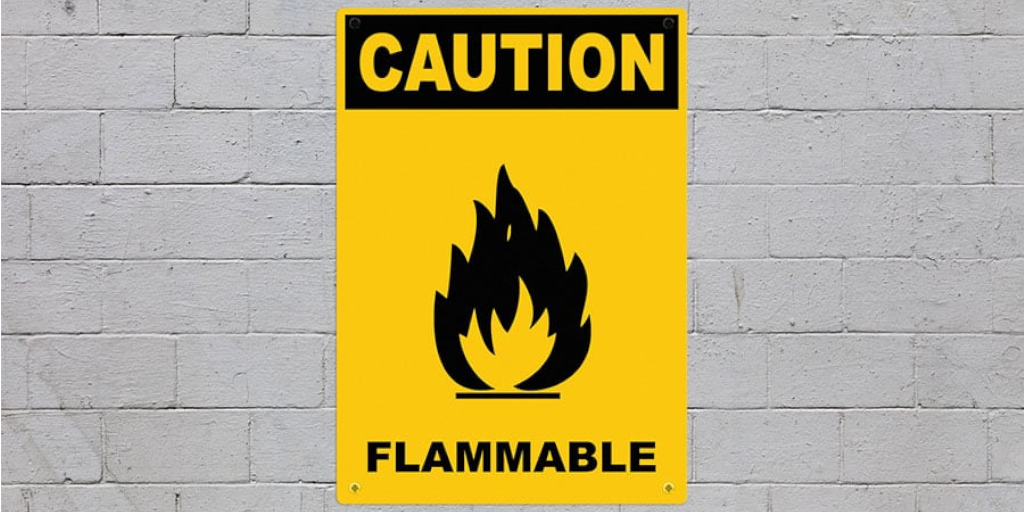
We’ll get into the detail of how to do a job hazard analysis later, but for now, let’s quickly run through how a JHA works so you can see how it will help you identify hazards and make tasks and jobs safer for you and your employees.
A job hazard analysis requires you to take a task and assess how your workers are performing that task. You’ll look at how they work, what tools they’re using, and also the environment they’re working in.
This will then enable you to identify all potential hazards associated with that task, and put safety measures in place to mitigate or control those hazards. Simple!
But all this means nothing unless we look in detail at…
Why you should complete a job hazard analysis
“The use of a JHA will reduce the number of workplace injuries, illnesses, and possible deaths in the workplace.”
Conservation Wiki, Job Hazard Analysis
There are three simple benefits to conducting a job hazard analysis:
Job hazard analysis benefit #1: Reduces the risk of workplace injury, illness, or death ☠️
The biggest and most obvious reason to conduct a JHA is to reduce the likelihood of work-related accidents, injuries, or illnesses from happening.
Ultimately when your employees come to work, they become your responsibility. So, identifying and then removing, or at least or controlling, hazards before they happen, allows you to make sure that the tasks your employees are performing on a daily basis are as safe as possible. This not only reduces the risk of injury, illness, and death but it also gives you peace of mind that you’ve done everything you can to protect your employees from harm.
“Once you know what the hazards are, you can reduce or eliminate them before anyone gets hurt.”
Safety Works, Job Hazard Analysis
Job hazard analysis benefit #2: Enables you to provide the right training 👩🏫
Once you’ve assessed a task and identified the potential hazards associated with that task, you can then take steps to remove the hazards or at least reduce them to an acceptable, safe level.
This part of the process will allow you to see where the gaps are in workplace protocols, procedures, and training. You can then make sure that your workers have the right training, equipment, and supplies so they can do their jobs safely.
“[A Job Hazard Analysis is a] great training tool and safety reminder for tasks that are done infrequently, are complicated, or have the ability to cause severe injury or damage.”
Conservation Wiki, Job Hazard Analysis
Job hazard analysis benefit #3: Reduces costs of unforeseen time off work & legal expenses 💰
As we’ve already covered, a JHA is designed to help you identify the hazards associated with a particular task or job and put controls in place to reduce the likelihood of workplace accidents, illnesses, and injuries from taking place.
This will save you a great deal of expense.
If one of your employees gets injured or falls sick because of a workplace task, they’ll have to take time off work until they’re fully recovered. And, you don’t need me to tell you that unforeseen time off work costs.
“2.8 million non-fatal workplace injuries and illnesses [occur each year], according to the U.S. Bureau of Labor Statistics….approximately 31% of those who were injured weren’t able to return to work right away.”
Consumer Notice, Workplace Injury Lawsuits
To give you an idea of just how much this costs though, take a look at the below statistics:
- If an employee gets a bone fracture, the median amount of days they’ll need to take off is 32
- If an employee develops carpal tunnel syndrome, they’ll likely take around 30 days off work
- If an employee develops tendonitis, the average amount of time they’ll take off work will be approximately 2 weeks
- If an employee gets a sprain, strain, or tear, you’re looking at around 11 days off work
- If an employee gets a burn they’ll probably need to take between three to five days off work
But, the costs you’ll have to shoulder from unforeseen time off work due to workplace injury or illness are on top of any potential compensation or lawsuits you might also have to pay out for.
It clearly pays to conduct a job hazard analysis.
The easiest way to complete a job hazard analysis
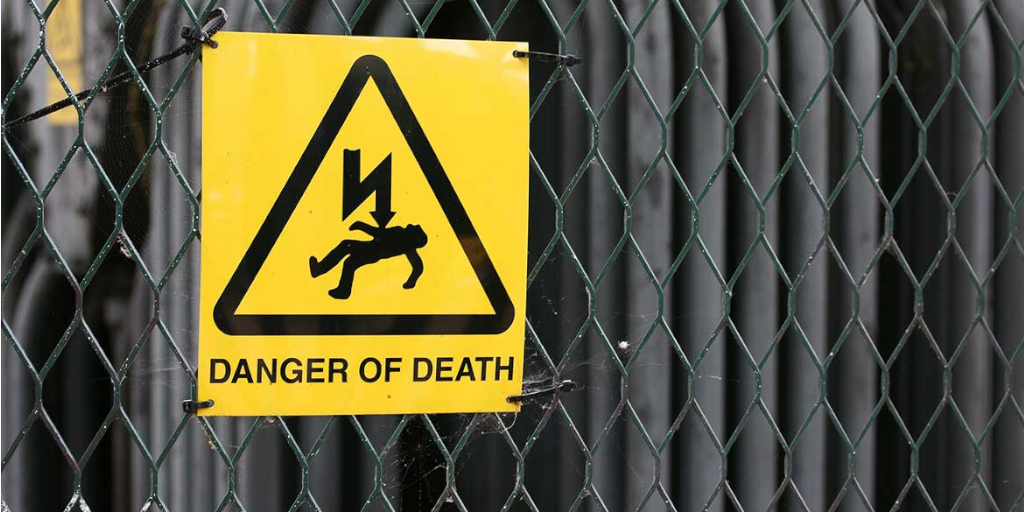
We’ve already established that you should conduct a JHA for any job, regardless of what it is, where it’s based, or who is doing it.
But, before we get into the easiest way to conduct one, we first need to touch on when you should do one.
When should I conduct a job hazard analysis?
The Occupational Safety and Health Administration (OSHA), the largest regulatory agency in the USA, recommends that employers conduct a job hazard analysis when a job, task, or activity:
- Has the potential to cause severe injury or illness (even if there is no previous history of incidents)
- Is prone to human error that could lead to an accident or injury
- Is new, infrequently performed, or particularly complicated
- Has changed its processes or procedures
Now we’ve covered when to conduct a JHA, let’s move onto the how…
How to conduct a job hazard analysis
A job hazard analysis can be broken down into four steps:
Job hazard analysis step #1: Break the job down ⛏️
The first step to conducting a JHA is to assess the job and break it down into a series of individual tasks. Watch, record, or photograph the employee doing the job and list out all the individual tasks they have to perform to get the job done. Then review the list with the employee to make sure you haven’t missed anything.
Job hazard analysis step #2: Identify the hazards 👀
Now you’ve got your list of tasks, it’s time to examine each one and root out all the potential hazards associated with it.
To make sure you’ve uncovered every single possible hazard, get the employees who are doing the tasks each day involved. They know the job inside out, so they’ll be able to help you evaluate the task properly, identify potential risks or concerns, and answer questions such as:
- What can go wrong?
- What are the consequences?
- How could it happen?
- What are other contributing factors?
- How likely is it that the hazard will occur?
For instance, if a particular task involves machinery with moving parts, there’s a risk of injury from the entanglement of hair or clothing. If a task involves an employee working with or around hot, toxic, or caustic chemicals or products, there’s a risk they might encounter burns or skin irritations. If a task is repetitive or involves working in awkward positions for a prolonged period of time, there’s a risk of ergonomic issues.
Job hazard analysis step #3: Determine preventive solutions 🛑
Once all hazards have been identified, you can then start to map out plans, measures, and controls to either eliminate them or at least reduce the risk of them happening.
Again, do this with the employees who are doing the job. They’ll know, better than anyone, how to reduce the risks associated with the tasks they take on each day.
Discuss each task and each hazard, find out if there is a safer way to do it, and document how you can eliminate or reduce the hazards.
For example, you might need to provide advanced training, change equipment or tools, install better lighting, replace certain tasks, or provide personal protective equipment (PPE) like ear guards.
Job hazard analysis step #4: Put preventive measures in place and review them regularly ⭐
Once you’ve identified all possible hazards and documented preventive measures to either reduce or eliminate them, it’s time to take action and roll out these preventative measures to your entire workforce.
But the work doesn’t stop there.
Changes in legislation might bring about new hazards, you might find new hazards you’d previously missed, or new hazards might arise as a consequence of a change to the job itself.
It’s important to review all your JHA’s periodically to make sure they’re still representative of the tasks, the environment, and the employees doing the job.
So that’s how to conduct a JHA, but I promised to give you the easiest way to complete a job hazard analysis…
How to conduct a job hazard analysis – the easy way
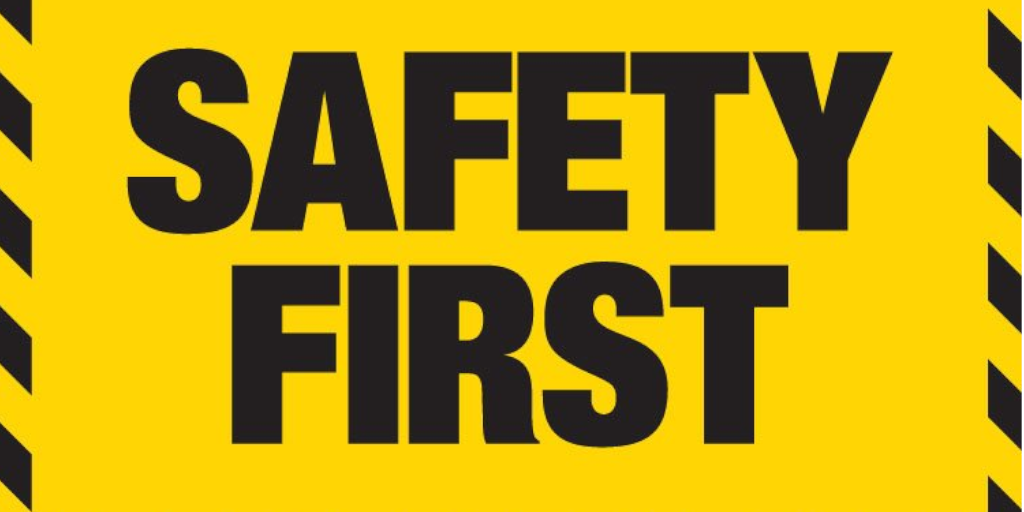
Running through a checklist is the easiest, and most fool-proof, way to conduct a job hazard analysis.
You can list out each of the JHA steps, and work your way through the checklist each time you need to conduct one.
Take this FAT FINGER job hazard analysis template, for example.
You can either use the above JHA template as it is (sign up here and add it to your account, for free), or you can build your own JHA checklist template and make it unique to your business.
Either way, using BPM software like FAT FINGER to complete your job hazard analysis, will make your life so much easier.
You can keep all your JHA’s in one single place and you can work through each JHA task methodically, without worrying about missing anything.
You can give your employees access to the relevant job hazard analysis so they can review and add their input easily, and you can record, save, and revisit key JHA information at any time, on any device, and in any place.
Set deadlines so you don’t forget to review your JHA’s and assign tasks to your employees so your hazard prevention measures are put in place quickly.
Watch this video to get a deeper understanding of how you can use FAT FINGER to complete your job hazard analysis and keep your employees safe from harm.
And there we have it: how to keep your staff safe with a job hazard analysis, with a free template included.
How do you currently conduct your job hazard analysis? Can you give our readers any advice? Let us know your experiences in the comments below!


